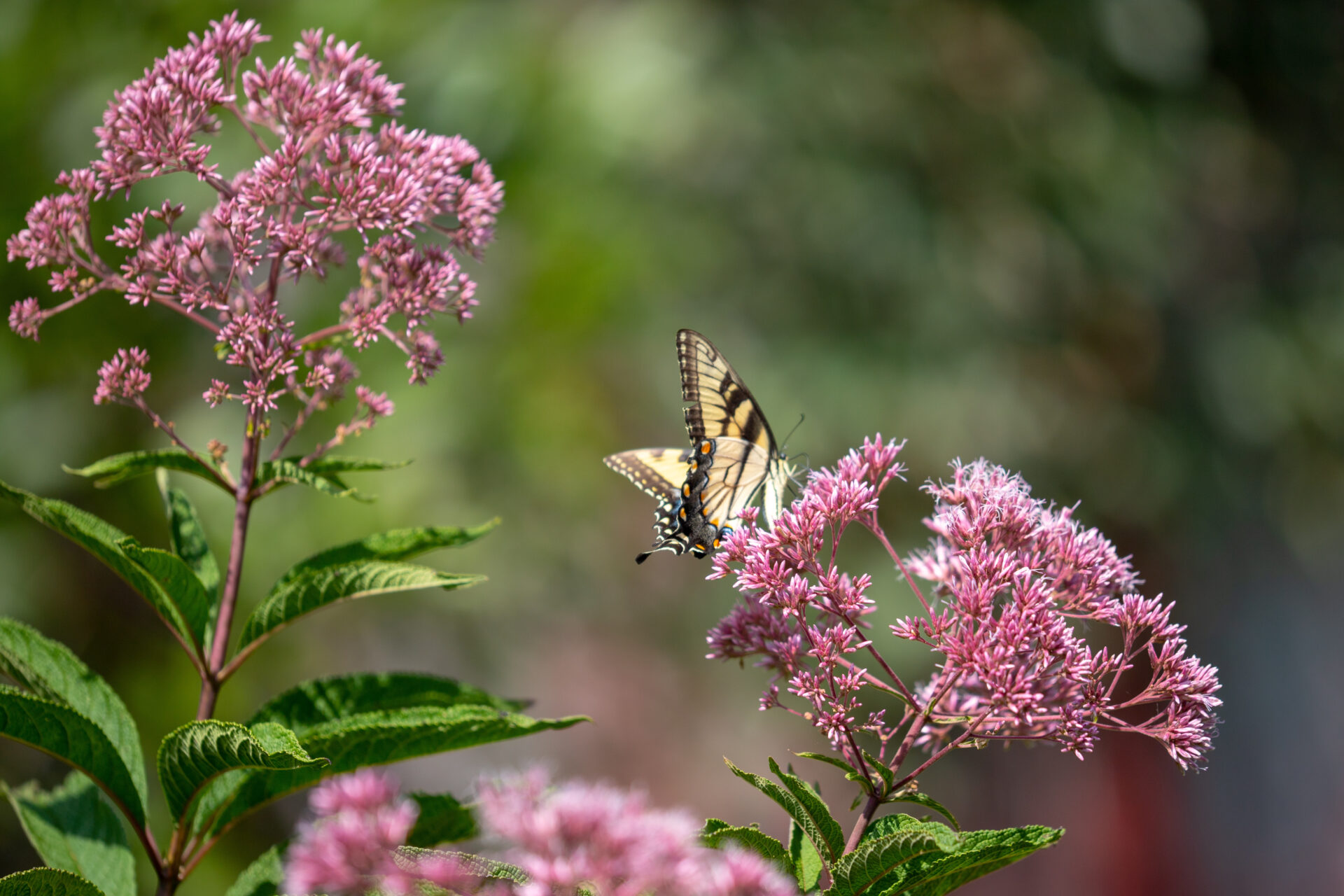
Whether is a low area in the yard or just slow-to-drain soils, many of us have a spot that is seasonally or perennially moist or downright soggy. Designed as a solution to a problem area this garden also works for rain gardens. Colorful easy to care for native plants that don’t mind wet feet will transform this problem area or rain garden into a blooming habitat for countless butterflies.
The Garden Design
How To Use Our Garden Design Guidelines:
Each one of our Native Garden Design Guidelines is designed for 100 square foot area. Feel free to multiply the number of plants as many times as needed to fill your space. The suggested placement and number of plants for each area appear as circles on the design. While the color and structure of each plant appear as a silhouette on the side view of the garden. These gardens can be combined as well to help achieve your garden goals. For example; the pollinator powerhouse garden and the hummingbird garden can be combined to create a display of bright blooms and equally colorful visitors.
To view more Native Garden Designs, please visit www.WestonNurseries.com/natives







